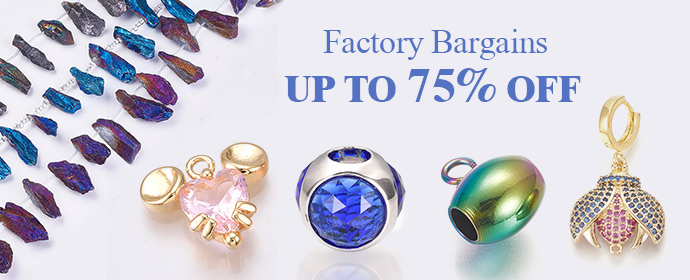Egyptian jewelry is one of the most fascinating and distinctive aspects of ancient Egyptian civilization. It not only reflects the artistic and craft skills of the ancient Egyptians but also their religious beliefs, social status and cultural identity. In this blog post, we will explore the history, types, meanings and symbolism of Egyptian jewelry from the Pre dynastic period to the Roman period.
History of Egyptian jewelry

The earliest evidence of jewelry making in Egypt dates to around 3,600 BC, when pre-dynastic Egyptians used simple materials such as shells, bones, stones and animal teeth. to create jewelry for themselves and their deceased loved ones. These primitive decorations were mainly used for protection and identification purposes. As Egyptian civilization developed, the jewelry industry also developed. The Egyptians learned to work with metals such as gold and silver and imported precious stones such as lapis lazuli, turquoise, carnelian, and amethyst from neighboring regions. They also mastered the techniques of casting, welding, hammering, engraving, inlaying, and polishing metal and stone to create intricate and intricate designs.

Photo Credit Pinterest
The art of jewelry making reached its peak during the Middle Kingdom (2055-1650 BC), when the Egyptians produced some of the most elaborate and elaborate jewelry ever seen in history. Middle Kingdom jewelry is characterized by a high degree of realism, symmetry and harmony. Egyptians used a variety of motifs and symbols to express their religious beliefs, political power, and personal identity. Some of the most popular designs are the scarab, the lotus, the eye of Horus, the ankh (symbol of life), and the cartouche (an oval frame containing the name of a pharaoh or pharaoh). person).

Photo Credit Style Skier
The New Kingdom (1550-1069 BC) was another golden age of Egyptian jewelry. This period saw the expansion of the Egyptian empire and the flourishing of trade and cultural exchange with other civilizations. Egyptians were exposed to new styles and materials from Asia, Africa and Europe. They incorporated foreign elements into their own jewelry traditions, creating a rich and diverse artistic expression.
The New Kingdom jewelry was also influenced by the funerary cults of the pharaohs, especially those of the 18th dynasty. The tombs of these pharaohs contained a vast amount of treasures that accompanied them to the afterlife. The most famous example is the tomb of Tutankhamun (1332-1323 BC), which was discovered in 1922 by Howard Carter. The tomb contained over 5,000 objects, many of which were made of gold and inlaid with precious stones. Among the most notable items are Tutankhamun’s golden mask, chest jewelry, bracelets, rings, and earrings.
The Late Late Period (664-332 BC) saw a decline in the quality and uniqueness of Egyptian jewelry. The Egyptians were under foreign rule from the Assyrians, Persians, and Greeks. Their jewelry became more standardized and mass-produced. They also adopted certain foreign styles and motifs, such as roses, palm leaves, acanthus leaves, and animal heads.

Photo credit Gemrock Auctions
The Ptolemaic period (332-30 BC) marked the end of native Egyptian rule and the beginning of Greek influence. The Ptolemaic dynasty was founded by Ptolemy I Soter, one of Alexander the Great’s generals who conquered Egypt in 332 BC. The Ptolemaic rulers adopted some aspects of Egyptian culture and religion, but they also introduced Greek elements into their jewelry. They used more silver than gold and favored pearls, emeralds, garnets, and glass over traditional Egyptian stones. They also used more complex techniques such as filigree (made of fine wire), granulation (tiny gold beads) and glazing (colored glass paste).
The Roman period (30 BC-395 AD) was the final period in the history of Egyptian jewelry. Egypt became a province of the Roman Empire after the death of Cleopatra VII in 30 BC. The Roman influence is evident in the designs and materials of the jewelry. The Romans favored gold over silver and used precious stones such as rubies, sapphires, diamonds, and opals. They also used coins as pendants or earrings. They introduced new motifs such as laurel wreaths, dolphins, eagles, lions, and portraits.

Photo Credit Pinterest
Types of Egyptian jewelry
Egyptians wore different types of jewelry on different parts of the body. Some of the most common types are:
– Tiara: These were headbands or crowns worn by royalty or nobility to signify their status and power. They are usually made of gold or silver and decorated with precious stones or symbols.

Photo credit Pinterest
– Necklace: These were worn by men and women of all classes. They are made of beads, pendants, amulets or chains. They can be simple or elaborate, depending on the occasion and the wearer’s preferences.
– Chest: These are large chest ornaments worn by royalty or high-ranking officials. They are usually made of gold and inlaid with stone or glass. They often have religious or political significance, such as representing a god, a pharaoh, or a scene from mythology.

Photo credit Pinterest
-Bracelet: These were worn on the wrist or arm by men and women of all classes. They are made of metal, leather or beads. They can be simple or ornate, depending on style and purpose.

Photo credit Etsy
– Ring: These were worn on the fingers by men and women of all classes. They are made of metal, stone or glass. They can be simple stripes or have complex designs, such as beetles, cartridges, or animals.

Photo credit Dinar Studio
– Earrings: These were worn on the ears by men and women of all classes. They are made of metal, stone or glass. These can be studs, rings, drops or clusters, depending on fashion and preference.
– Amulet: These are small objects worn around the neck or attached to other jewelry. They are made of metal, stone, clay, wood or terracotta (glazed ceramic). They have magical or protective functions, such as warding off evil, ensuring health, or granting wishes.

Photo credit Shannon Grech
Meaning and symbolism of Egyptian jewelry
Egyptian jewelry was not only a form of adornment but also a means of expressing one’s identity and beliefs. Egyptians believed that jewelry had spiritual and magical powers that could influence their lives and afterlife. The choice of materials, colors, shapes, and patterns all have specific meanings and symbols, reflecting the personality, status, and aspirations of the wearer.

Photo credit Britannica
Some of the most popular meanings and symbols of Egyptian jewelry are:
– Gold: This was the most precious and sacred metal in ancient Egypt. It was associated with the sun god Ra and his son Horus, who represented the pharaohs. It symbolized eternal life, purity, divinity, and royalty.

Photo credit Pinterest
– Silver: This was the second most valuable metal in ancient Egypt. It was associated with the moon god Thoth and his daughter Maat, who represented wisdom and justice. It symbolized femininity, balance, and harmony.
– Lapis lazuli: This was a deep blue stone imported from Afghanistan. It was associated with the sky goddess Nut and her son Osiris, who represented the underworld. It symbolized heaven, resurrection, and immortality.
– Turquoise: This was a light blue-green stone mined in Sinai. It was associated with the goddess Hathor and her son Horus the Elder,who represented joy and protection. It symbolized happiness, health, and luck.

Photo Credit Egypt 7000
– Carnelian: This was a red-orange stone found in Egypt and Nubia. It was associated with the god Seth and his sister Nephthys,who represented chaos and death. It symbolized strength, courage, and vitality.
– Amethyst: This was a purple stone imported from Arabia. It was associated with the goddess Isis and her son Horus the Younger,who represented magic and healing. It symbolized wisdom, power, and faith.
– Scarab: This was a beetle-shaped motif that represented the god Khepri, who symbolized rebirth and creation. It was often used as an amulet or a seal ring to ensure regeneration and protection.
– Lotus: This was a flower-shaped motif that represented the goddess Nefertum, who symbolized beauty and fragrance. It was often used as a pendant or an earring to enhance attractiveness and charm.
– Eye of Horus: This was an eye-shaped motif that represented the god Horus, who symbolized kingship and victory. It was often used as an amulet or a necklace to ward off evil and grant health.
– Ankh: This was a cross-shaped motif that represented life itself. It was often used as an amulet or a bracelet to ensure longevity and prosperity.
– Cartouche: This was an oval-shaped motif that contained the name of a pharaoh or a royal person. It was often used as a pendant or a ring to signify authority and identity.

Photo credit Pinterest
Conclusion
Egyptian jewelry is a fascinating subject that reveals much about the ancient Egyptian culture and beliefs. It shows how the Egyptians used jewelry as a way of expressing their identity and beliefs through their choice of materials, colors, shapes, and motifs. It also shows how they used jewelry as a way of enhancing their appearance and attracting positive forces into their lives.
If you enjoyed this blog post about Egyptian jewelry history and spiritual significance, please share it with your friends and leave a comment below.
Recommended1 recommendationsPublished in apparel, Jewelry, Our Fashion Passion, Pop Fashion




